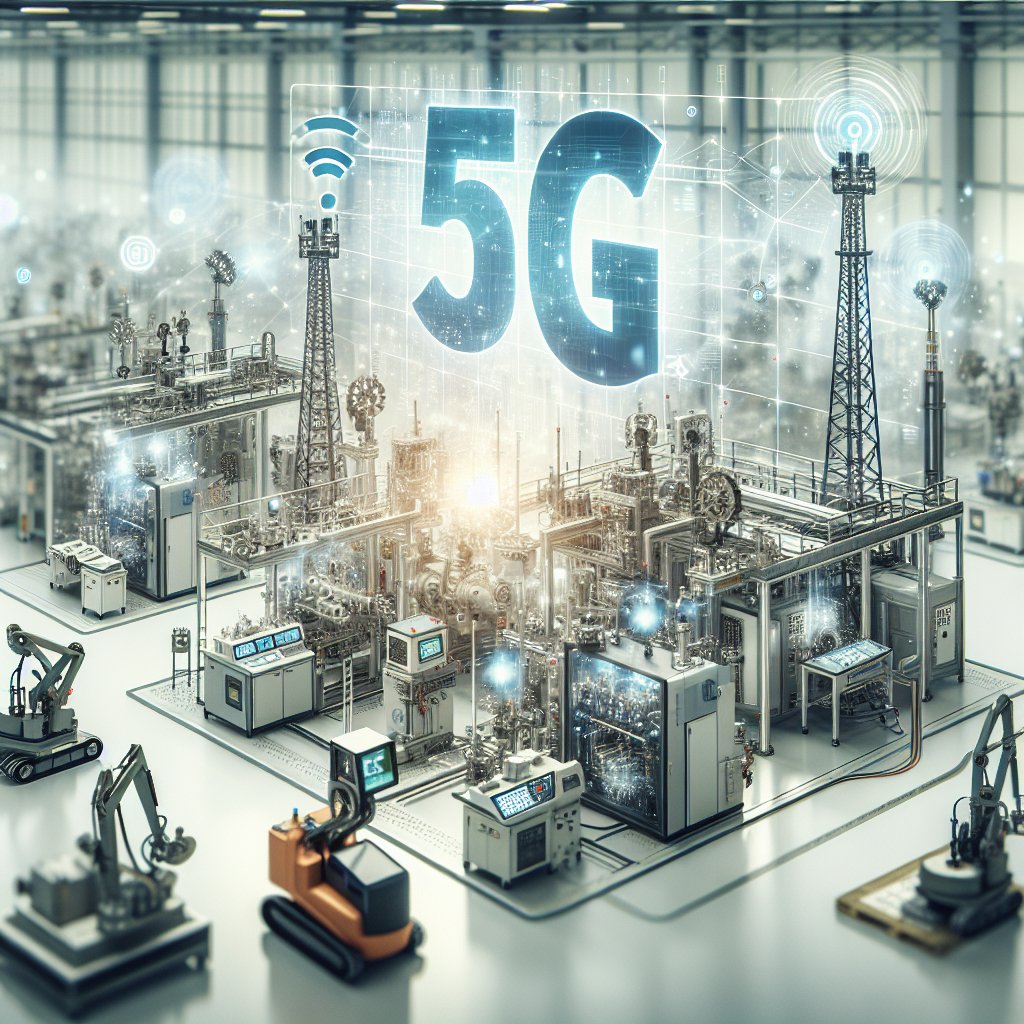
The advent of 5G technology is revolutionizing industrial automation and connectivity, offering unprecedented opportunities for efficiency and innovation. As industries worldwide strive to enhance productivity and streamline operations, 5G emerges as a pivotal force driving this transformation. This article delves into the profound impact of 5G on industrial automation, exploring its capabilities, benefits, and the future it promises.
Understanding 5G Technology
5G, the fifth generation of wireless technology, is not merely an upgrade from its predecessor, 4G. It represents a significant leap forward in terms of speed, latency, and connectivity. With speeds up to 100 times faster than 4G and latency reduced to mere milliseconds, 5G enables real-time communication and data transfer, which are crucial for industrial applications.
One of the most significant features of 5G is its ability to connect a vast number of devices simultaneously. This capability is essential for the Internet of Things (IoT), where numerous sensors and devices communicate with each other to automate processes and gather data. In industrial settings, this means that machines, robots, and systems can work in harmony, sharing information instantaneously and making autonomous decisions.
The Role of 5G in Industrial Automation
Industrial automation involves the use of control systems, such as computers or robots, and information technologies to handle different processes and machinery in an industry to replace human intervention. 5G technology enhances this automation by providing a robust and reliable network that supports the seamless operation of automated systems.
Enhanced Connectivity and Communication
With 5G, industries can achieve enhanced connectivity and communication between devices. This is particularly beneficial in environments where machines need to communicate with each other to perform complex tasks. For instance, in a manufacturing plant, 5G can facilitate the coordination of robotic arms, conveyor belts, and quality control systems, ensuring that each component operates in sync with the others.
Moreover, 5G’s low latency ensures that commands and data are transmitted almost instantaneously, reducing the risk of errors and downtime. This is crucial in industries where precision and timing are critical, such as in automotive manufacturing or pharmaceuticals.
Real-Time Data Analysis and Decision Making
Another significant advantage of 5G in industrial automation is its ability to support real-time data analysis and decision-making. With the vast amounts of data generated by IoT devices, industries can leverage 5G to process this data quickly and efficiently. This enables companies to make informed decisions based on real-time insights, improving operational efficiency and reducing costs.
For example, in the energy sector, 5G can facilitate the monitoring of power grids, allowing for real-time adjustments to optimize energy distribution and reduce waste. Similarly, in logistics, 5G can enable real-time tracking of shipments, ensuring timely deliveries and efficient route planning.
5G and the Future of Industrial Connectivity
The future of industrial connectivity is set to be transformed by 5G, with industries poised to benefit from its capabilities in numerous ways. As 5G networks continue to expand and mature, we can expect to see even more innovative applications and solutions emerge.
Smart Factories and Industry 4.0
5G is a key enabler of the smart factory concept, where advanced technologies such as IoT, artificial intelligence (AI), and machine learning are integrated to create highly efficient and flexible manufacturing environments. In a smart factory, 5G provides the backbone for seamless communication between machines, systems, and humans, facilitating the implementation of Industry 4.0 principles.
Industry 4.0 represents the fourth industrial revolution, characterized by the fusion of digital, physical, and biological systems. With 5G, industries can fully embrace this revolution, leveraging advanced technologies to optimize production processes, enhance product quality, and reduce environmental impact.
Remote Monitoring and Maintenance
5G also enables remote monitoring and maintenance of industrial equipment, reducing the need for on-site personnel and minimizing downtime. With 5G, technicians can access real-time data from machines and systems, diagnosing issues and performing maintenance tasks remotely. This not only saves time and resources but also enhances safety by reducing the need for human intervention in hazardous environments.
Furthermore, 5G’s high-speed connectivity allows for the use of augmented reality (AR) and virtual reality (VR) in maintenance and training applications. Technicians can use AR glasses to receive real-time instructions and guidance, improving the efficiency and accuracy of maintenance tasks.
Challenges and Considerations
While 5G offers numerous benefits for industrial automation and connectivity, there are also challenges and considerations that industries must address. One of the primary challenges is the cost of implementing 5G infrastructure, which can be significant, particularly for small and medium-sized enterprises.
Additionally, industries must consider the security implications of 5G, as the increased connectivity and data exchange can create vulnerabilities. Ensuring robust cybersecurity measures are in place is essential to protect sensitive data and maintain the integrity of industrial systems.
Finally, industries must navigate the regulatory landscape surrounding 5G, which can vary significantly between regions. Understanding and complying with these regulations is crucial to ensure the successful deployment and operation of 5G networks.
Conclusion
5G is set to transform industrial automation and connectivity, offering unprecedented opportunities for efficiency, innovation, and growth. By enabling enhanced connectivity, real-time data analysis, and smart factory applications, 5G is paving the way for the future of industry. However, to fully realize the potential of 5G, industries must address the challenges and considerations associated with its implementation. As 5G networks continue to evolve, the possibilities for industrial automation and connectivity are limitless, promising a future where industries can operate more efficiently, sustainably, and competitively.

